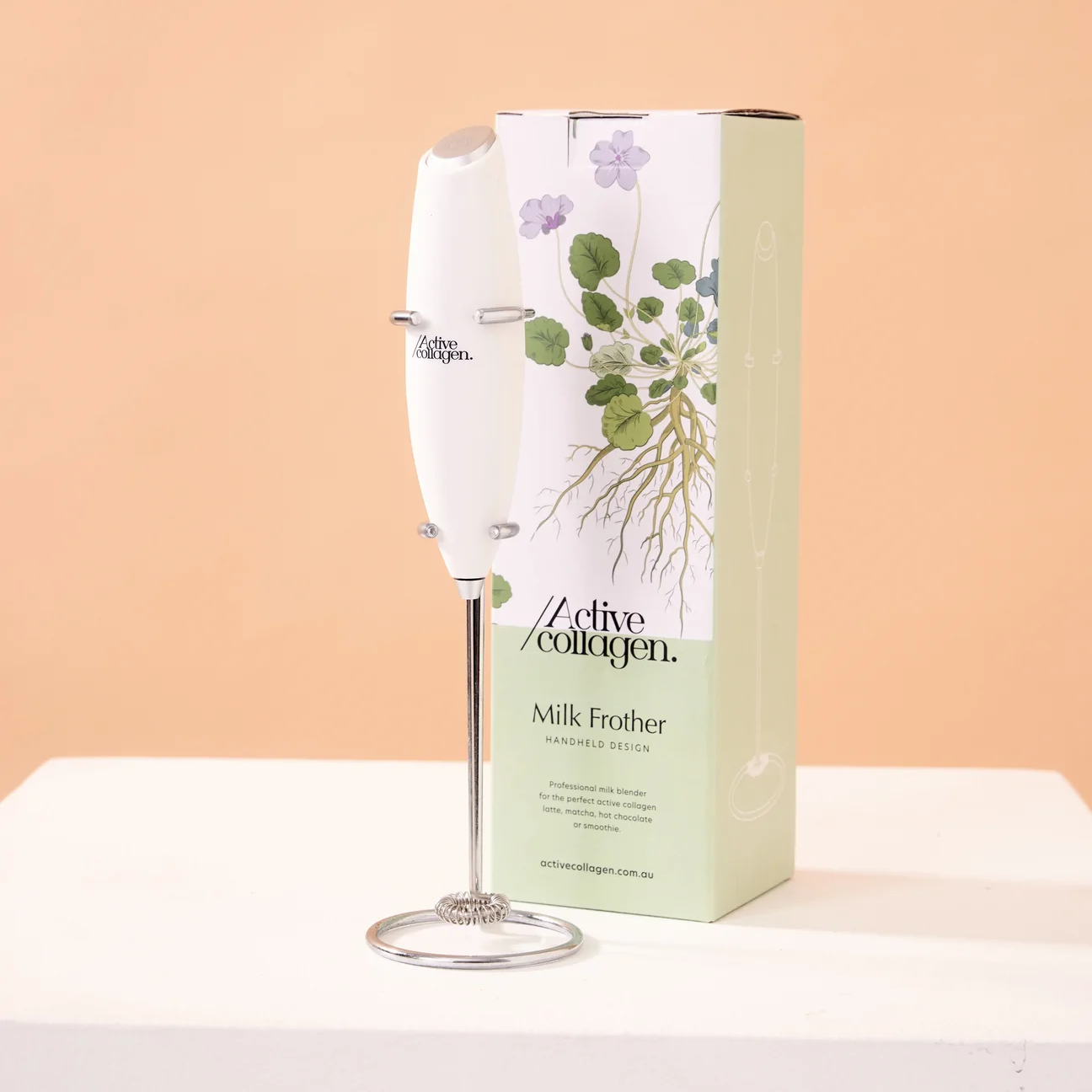Have you ever wondered why your skin is clearer at certain times of the month than others? Not only does our menstrual cycle have an effect on PMS, our energy and mood, it also has a strong correlation with our skin health.
Just like the gut-skin connection, there is a connection between our hormones and skin that reveals what is happening with our hormones. During a menstrual cycle, hormonal fluctuations can cause many women to experience skin concerns at some point during their menstruating years.
Skin concerns are a common hormonal complaint; however, they can be helped with the right tools. Curious about how you can support your hormone-skin connection? Read on to find out.
Hormones Affecting Our Skin
Our menstrual cycles are made up of four phases – the menstrual phase (days 4-6), follicular phase (days 7-12), ovulatory phase (days 13-18) and luteal phase (days 19-28). During each phase the levels of female sex hormones oestrogen and progesterone differ. However, in terms of skin health the changes in oestrogen have the biggest influence. Other hormones that impact our skin are male sex hormones (androgens) and stress hormones such as cortisol.
In terms of hormonal acne or breakouts there is a link between balancing the ratio of oestrogens to androgens. Androgens such as testosterone stimulate sebum production from sebaceous glands – oil produced by glands in your skin that prevents skin dehydration. When sebum production is elevated this can lead to hormonal breakouts. Oestrogens have the reverse effect in that they inhibit androgen secretion and sebum production. These hormonal breakouts are seen in around 70% of women during the luteal phase when there are elevated levels of androgens in comparison to oestrogen.
Oestrogens Protective Effects
Oestrogen really is a powerful female hormone. You may have heard its protective effects in relation to bone and cardiovascular health, but have you heard the wonders is does for our skin?
The epidermis and dermis of our skin have many structures which oestrogen has a significant role in maintaining their function. This is due to the oestrogen receptors present in skin cells. These skin structures and cells include vasculature, the formerly mentioned sebaceous glands, hair follicles and melanocytes which have a control over skin pigmentation. Interestingly, its effect on melanocytes can manifest during pregnancy where hyperpigmentation is seen in response to the gradual elevation of oestrogen.
Oestrogen also has an association with collagen synthesis. During periods of sufficient oestrogen levels – years before menopause – skin appears thicker and more hydrated due to higher levels of collagen synthesis. This association is clearly evident in postmenopausal women with low oestrogen levels impacting skin thickness and hydration aka the noticeable signs of aging. In the first five years post menopause, collagen content of the skin has shown to decrease by up to 30% in correlation to the dramatic drop in oestrogen levels.
Along with oestrogens direct effect on inhibiting sebum secretion, oestrogen metabolism also has protective effects. The metabolism of oestrogens in the liver is known to increase sex hormone-binding globulin (SHBG) – a protein that regulates the amounts of testosterone and oestrogen in the body. As SHBG has a preference of binding to androgens over oestrogens this can lower levels of androgens that may be high and in response lower the levels of sebum produced.
Identifying Hormonal Breakouts
At the start of every cycle oestrogen is low and begins to gradually increase until peaking just before ovulation with a second smaller peak around 5 days after. When oestrogen begins to decrease, reaching low levels during the luteal phase and into the following menstrual phase, oestrogen protecting effects are compromised leading to breakouts.
Hormonal breakouts are most often cyclical, and occurrence can be pinpointed around the same time each cycle. Common periods of hormonal breakouts include the late luteal phase, perimenopause and in those taking progestin-only contraceptives. These breakouts commonly present frequently around the chin and jawline.
Supporting Hormones to Support Skin
It is clear that hormones play a considerable role in maintaining healthy skin. Therefore, supporting a healthy menstrual cycle – and its associated hormones - is key for preventing unwanted breakouts and skin concerns.
Diet is a major contributor to maintaining optimal hormone health. For women, having a macronutrient balanced diet that especially doesn’t skimp on the healthy fats is crucial for proper hormone function. This is due to dietary fats having an influence on sex hormone synthesis and overall sufficient caloric intake that helps regulate hormone function. So, load up on those healthy fats like extra virgin olive oil, avocado and nut butters.
Our hormones and their associated organs – adrenals, hypothalamus, ovaries, pituitary gland - are picky and require a balanced environment for healthy function. Managing stress, getting enough sleep, eating nutrient dense foods, getting sufficient sunlight and exercising regularly are all factors that support hormone health. And in a big roundabout way also support healthy skin.
Raghunath, R. S., Venables, Z. C., & Millington, G. W. (2015). The menstrual cycle and the skin. Clinical and experimental dermatology, 40(2), 111–115. https://doi.org/10.1111/ced.12588
Thiyagarajan, D. K., Basit, H., Jeanmonod, R. (2020). Physiology, Menstrual Cycle. https://www.ncbi.nlm.nih.gov/books/NBK500020/
Bagatin, E., Freitas, T. H. P., Rivitti-Machado, M. C., Machado, M. C. R., Ribeiro, B. M., Nunes, S., & Rocha, M. A. D. D. (2019). Adult female acne: a guide to clinical practice. Anais brasileiros de dermatologia, 94(1), 62–75. https://doi.org/10.1590/abd1806-4841.20198203
Tsatmali, M., Ancans, J., & Thody, A. J. (2002). Melanocyte function and its control by melanocortin peptides. The journal of histochemistry and cytochemistry : official journal of the Histochemistry Society, 50(2), 125–133. https://doi.org/10.1177/002215540205000201
Stevenson, S., & Thornton, J. (2007). Effect of estrogens on skin aging and the potential role of SERMs. Clinical interventions in aging, 2(3), 283–297. https://doi.org/10.2147/cia.s798
Ebede, T. L., Arch, E. L., & Berson, D. (2009). Hormonal treatment of acne in women. The Journal of clinical and aesthetic dermatology, 2(12), 16–22. https://pubmed.ncbi.nlm.nih.gov/20725580/
Tan, A. U., Schlosser, B. J., & Paller, A. S. (2017). A review of diagnosis and treatment of acne in adult female patients. International journal of women's dermatology, 4(2), 56–71. https://doi.org/10.1016/j.ijwd.2017.10.006
Ryterska, K., Kordek, A., & Załęska, P. (2021). Has Menstruation Disappeared? Functional Hypothalamic Amenorrhea-What Is This Story about?. Nutrients, 13(8), 2827. https://doi.org/10.3390/nu13082827




